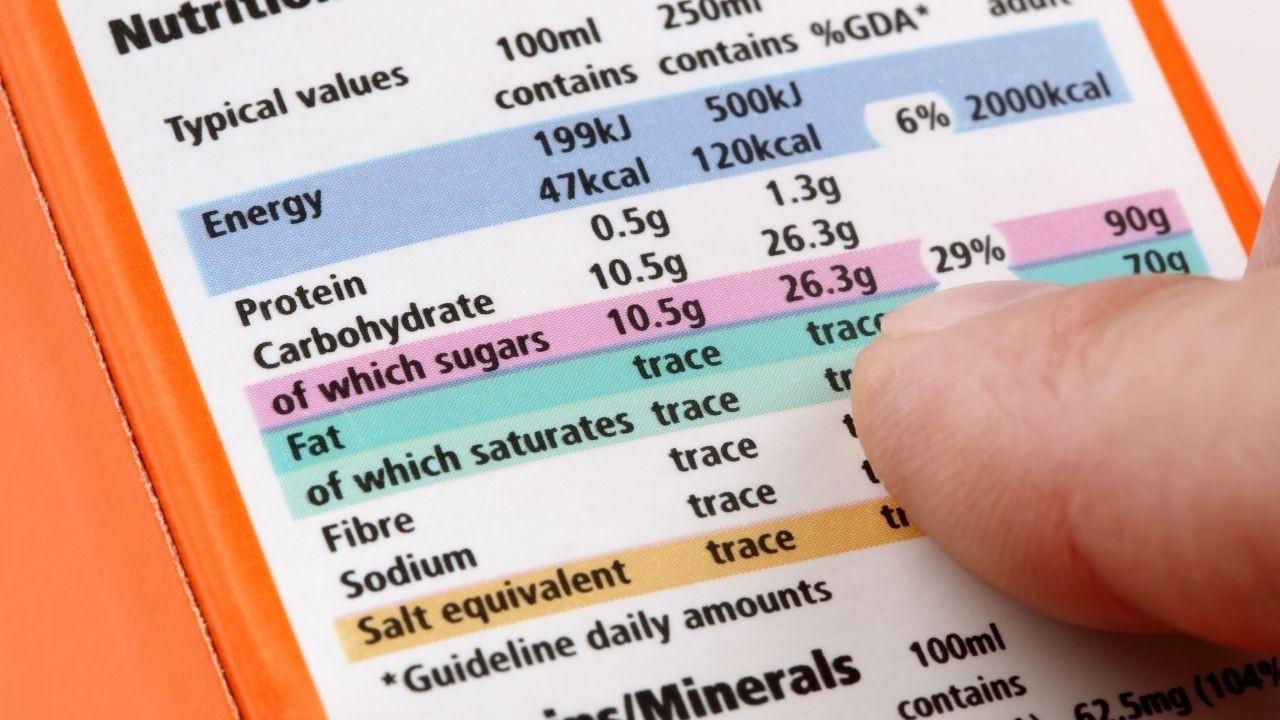Nutrition Label 101

While you are a sparkly, unique snowflake, your body does not defy the laws of math and science. And those laws of math and science say that if you eat less calories than you burn each day and you will lose fat.
Those laws also state that your body needs three macronutrients (macros) to function at its best.
Those macros are carbs, fat, and protein.
So, how do we know how many calories we're eating each day? How do we know how many grams of carbs, fat, and protein are in the foods we're eating each day?
Enter the nutritional label.
Every item of food in the supermarket has a label on it, and they all contain the same basic information.
While the food you buy and what you eat in a day will vary based on your personal goals, let's get an overview of the main categories to look for and what they mean.
Serving Size: All info listed on a nutrition label is according to serving size. Unfortunately, a serving of peanut butter is not the entire jar, but two tablespoons. This can be not only disappointing (who doesn't want to eat an entire jar of PB?!) but also misleading, as you may think a drink only has 2 grams of sugar without realizing a serving size is a cup and there are ten servings in the container (20 grams of sugar total, a big difference). Always check the serving size first.
Carbohydrates: Have your streamers and whistles ready for this one:
Carbs are not the enemy.
Carbs are given a bad rap but the reality is, when eaten from healthy sources, they provide the ideal energy source for our body.
The amount of carbs you eat in a day will vary based on your personal goals, but they should never be totally eliminated from your diet for prolonged periods of time.
Fat: Like carbs, fat often gets a bad rap. The truth is, eliminating all fat from your diet is extremely detrimental to your health. Fat is used in hormone regulation and brain function. And, you know, you kinda need both of those.
The goal isn't to eliminate fat, but to keep the amount we eat in check and make sure it's coming from natural, healthy sources such as nuts and avocados.
Protein: Protein is the building blocks of our bodies. The goal is to get as much protein as possible from real, whole foods. Supplements do exactly what their name states: they should be used to supplement, or add to, your diet if you're not getting enough protein from regular food. As with carbs and fat, how much protein your body needs to perform at its best depends on your personal goals. Protein is the one macronutrient most people are not getting enough of and the macronutrient that's often marketed in a misleading way. (Hint: protein-packed Oreos are not a real thing.) Don't buy the marketing hype. Flip that package over and check the nutrition label for its protein content.
Our bodies are designed to function best with a healthy balance of carbs, fat, and protein. Getting in the habit of checking nutrition labels is step one to understanding how your body is being fueled.
